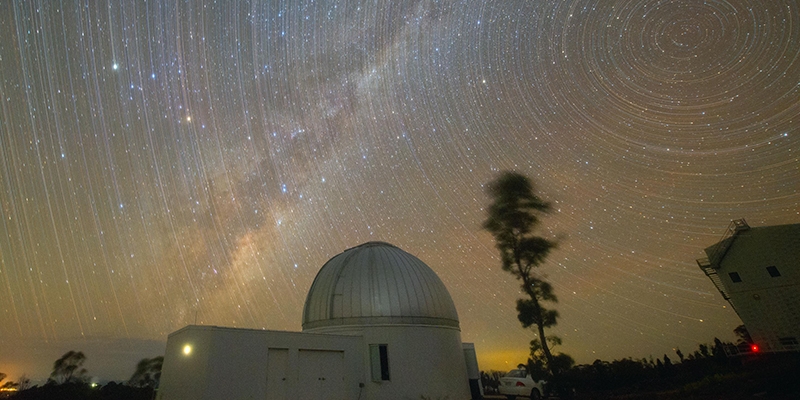
KMTNet-SSO in Australia (Korea Astronomy and Space Science Institute)
By Koh Hyunjeong
An international research team with Korean participation has discovered a super Earth-like exoplanet, with the global academic journal Science publishing the findings.
The Korea AeroSpace Administration (KASA) on April 25 said the team with staff from the Korea Astronomy and Space Science Institute (KASI) discovered a "long-period super-Earth exoplanet" through observation data from the Korea Microlensing Telescope Network (KMTNet).
A super-Earth is planet with a rocky surface like Earth but whose mass is 1-10 times bigger with an orbital period of over a year. An exoplanet is a planet that orbits a star rather than Earth's sun.
OGLE-2016-BLG-0007Lb, the discovered exoplanet, is about 14,000 light years from Earth with a mass about 30% larger. Its mass makes it the smallest among super-Earth exoplanets with long orbital periods discovered thus far.
It orbits its parent star, which has a mass 60% larger than that of the sun, at a distance of 1.5 billion km and a revolution that takes around 40 years.
KASA Administrator Yoon Youngbin said, "Thanks to KMTNet's outstanding performance, we are leading the discovery of exoplanets through gravitational microlensing."
Developed and run by KASI, KMTNet is a system that searches for exoplanets using gravitational microlensing. Researchers have discovered about 300 such planets through this method, including 227 after KMTNet's launch.
hjkoh@korea.kr
Most popular
- 2 Egyptian sisters reflect on 10 years as Honorary Reporters
- 'When Life Gives You Tangerines' actor to promote Hanbok
- Korean content on Netflix in 2024 ranked 2nd in global views
- Social influencer teaches Korean to world via short videos
- Actor Bae Doona's first romcom in decade to hit theaters in May
